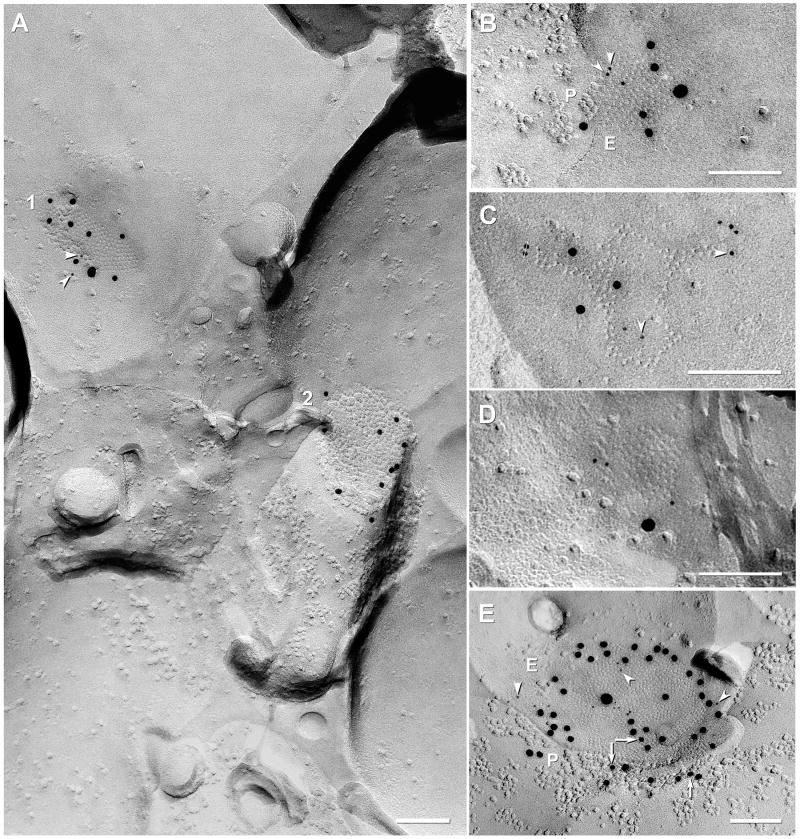Figure 3.
FRIL localization of Cx45 vs. Cx36 in mouse (A-D) and rat (E) IPL. A, Neuronal gap junctions in adjacent cells, one of which (1; 210 connexons) is labeled for both Cx45 (one 18-nm gold and two 6-nm gold beads, arrowheads) and Cx36 (ca. 450 connexons; eight 12-nm gold beads) and the second (2) is labeled for Cx36 only (10 12-nm gold beads). #1 overall LE = 1:19 and #2 LE = 1:45. B, Medium-size plaque gap junction (139 connexons) labeled for Cx45 (three 6-nm gold beads, arrowheads, and one 18-nm gold bead) and Cx36 (five 12-nm gold beads); overall LE = 1:15. C, Medium-size reticular gap junction (106 connexons) labeled for Cx45 (six 6-nm, arrowheads) and for Cx36 (three 12-nm gold beads). Two gold beads (thin cross-bars) within the apparent “radius of uncertainty” for connexon labeling represent “false-positive” labeling (i.e., “noise”) because stereoscopic analysis (not shown) revealed that both were >1 μm above the replica on an unstable wisp of undissolved Lexan plastic. Overall LE = 1:12. D, Small gap junction (68 connexons) in rat IPL labeled for Cx45 only (one 18-nm and three 6‐nm gold beads; zero 12-nm gold beads are present for Cx36). Cx45 LE = 1:17. This gap junction may be too small to allow positive analysis regarding Cx36. A and C from same replica. E, Large plaque gap junction (797 connexons) with small area of P-face and larger area of E-face; labeled for both Cx45 (three 12-nm gold beads, arrows; and one 30-nm gold bead) and for Cx36 (17 6-nm gold beads; arrowheads and 41 18-nm gold beads; labeled for ca. twice as long as all other FRIL images shown; see MATERIALS AND METHODS for details). Overall LE = 1:13. Scale bars, 0.1 μm.

